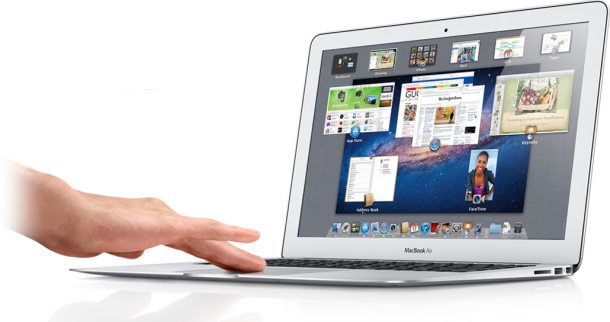MacBook Air and OS X Lion synergy: A big hurdle for Windows 8


OS X Lion has a raft of features designed to make working with a MacBook Air, even older MacBooks, as intuitive as possible. The ability to have lots of programs running and easily get to any one of them is already changing the way I work with OS X. The handling of the small notebook screen is pure genius, as is moving between programs occupying the entire display via simple touch gestures. The hardware and software have been written from the ground up to work together.
Apple hasn't done this overnight, it has been laying the groundwork for this synergy for a while. It started by putting large touchpads on every MacBook, and carried it over to non-notebooks with the release of the Magic Mouse and Magic TrackPad. The groundwork for a touch optimized experience was laid even before the iPad hit the scene. The company had a good plan and has executed it well.
This is the giant hurdle Microsoft faces with the next version of Windows, not so cleverly codenamed Windows 8. The sneak peeks Microsoft has given us of Windows 8 show an exciting new direction for the platform. Windows 8 attempts to do what Apple has executed, making the OS work efficiently with the system in the user's favor. What will determine how well consumers react to Windows 8 when released will be how easy it is to use, especially on notebooks. Windows 8 must find a way to handle smaller displays intelligently like OS X Lion, and bring touch (not necessarily the screen) into the equation.
This is a daunting task for Microsoft as a software company. The legacy of Windows is that by design of Microsoft's business plan, it must work on a wide variety of hardware made by other companies; this is not a complication faced by Apple. Microsoft decided long ago to be a software company, and this is now a competitive disadvantage. If it has to compromise the user experience offered by Windows 8 to make it work on some hardware, it will not compare well with OS X. That is a simple fact of life in this competitive environment.
Computer users have evolved the last few years to expect systems to be easy, even enjoyable to use. In the early days of Windows we all expected things to be complicated, and keeping everything going properly required access to an "expert". Those days are gone, folks now expect their computer to just work, and be intuitive at that. This is the biggest obstacle facing adoption of Windows 8, as it means the OS must work on whatever hardware Microsoft certifies it for, and run well.
I am optimistic about the next version of Windows, more so than with any version in a long time. I hope that Microsoft's decision to broaden the scope of hardware that Windows 8 will service doesn't turn into a bad decision. Apple's ecosystem is getting better due to the limited hardware focus needed due to building everything internally. Windows 8 doesn't have that luxury, and that may be an awfully big a hurdle to jump.
Related:
- Why my next laptop will be a MacBook Air
- First impressions of OS X Lion for mobile workers
- The 11-inch MacBook Air is the best laptop I've ever owned
- Apple (mostly) kills off the white Macbook
- Apple MacBook Air: The original Ultrabook gets even better
- Apple rocks China: Can it outrun counterfeiters?
- Apple’s corporate iPhone, iPad app strength bad news for rivals
- Apple Q3 a blowout: 20.34 million iPhones; 9.25 million iPads